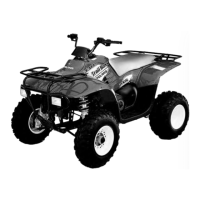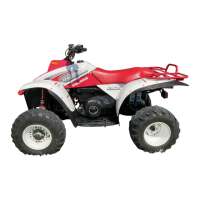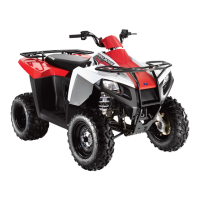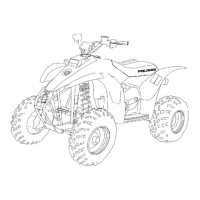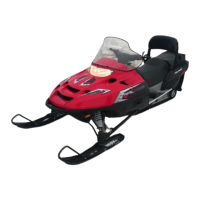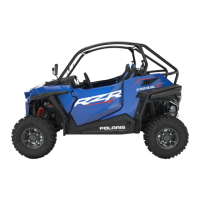
Do you have a question about the Polaris TRAIL BOSS 2003 and is the answer not in the manual?
| Brand | Polaris |
|---|---|
| Model | TRAIL BOSS 2003 |
| Category | Offroad Vehicle |
| Language | English |
Identifies the vehicle model using a unique number for warranty and service correspondence.
Provides key physical measurements of the vehicle, including length, width, and height.
Lists detailed technical data for engine, clutch, electrical, suspension, and drive train components.
Crucial values for tightening fasteners during assembly and maintenance to ensure safety and component integrity.
Outlines regular service intervals and tasks for inspection, adjustment, and lubrication.
Essential safety and operational check before riding, covering tires, brakes, controls, and fluids.
Lists recommended fluids, greases, and service products by part number for maintenance.
Details procedures for adjusting the pilot screw for idle mixture and idle speed.
Checks recommended for keeping the brake system in good operating condition before each ride.
Provides essential technical specifications for engine components like valves, camshaft, and piston.
Describes the step-by-step process for removing the engine from the vehicle chassis.
Details the procedure for cylinder honing to ensure proper piston ring seating and bore finish.
Illustrates the path of lubricating oil through the engine's lubrication system.
Visual guide to the carburetor components, listing part numbers for service and replacement.
Details the fuel system's main storage component, including fuel lines and valve connections.
Crucial for engine performance at different altitudes/temperatures, providing jet selection guidelines.
Essential for maintaining proper fuel delivery and engine operation by cleaning jets and passages.
Visual guide to the vehicle's body components, including front and rear cab assemblies.
Exploded view of steering system components, detailing tie rods, steering post, and related parts.
Critical values for tightening fasteners on body and steering components for safety and integrity.
Procedure for replacing ball joints, important for maintaining steering and suspension integrity.
Explains the function of the Polaris Variable Transmission (PVT) system and its components.
Provides steps for disassembling the PVT system, including clutch and cover removal.
Details critical spring data, including wire diameter and free length, for clutch performance.
Key procedure for ensuring proper power transfer and belt life by measuring and adjusting deflection.
Procedure for servicing front wheel hubs, including bearing inspection and seal removal.
Steps for correctly installing the front hub, including greasing and torque specifications.
Steps to remove the rear axle assembly from the concentric swingarm.
Procedure for removing the rear axle housing for service or inspection.
Steps for removing the transmission from the vehicle chassis.
Detailed steps for taking the transmission apart, including gear and fork inspection.
Steps for reassembling the transmission, including shaft and gear installation.
Guides for diagnosing shifting difficulties by checking external linkage and internal components.
Critical data for brake system components, including pad thickness and torque values.
Explains how the hydraulic brake system functions, detailing master cylinder and caliper actions.
Procedure for removing front brake pads, including caliper piston retraction.
Details how to check the rear brake disc for scoring, thickness, and runout.
Helps diagnose common brake system issues such as squeal, poor performance, or lock-up.
Essential steps for checking and adjusting engine ignition timing using a timing light.
Diagnostic steps for troubleshooting no spark or intermittent spark conditions.
Procedure to check if the alternator and charging system are functioning correctly.
Covers battery maintenance, inspection, testing, and installation for optimal performance.
Diagnostic steps for troubleshooting starter motor issues, including voltage drop tests.
